“You can fly no other fighter jet the way you fly the Hornet”
Introducing the Air Force F/A-18 Hornet display pilot 2023 Captain Henri Toppari from Lapland Air Command.
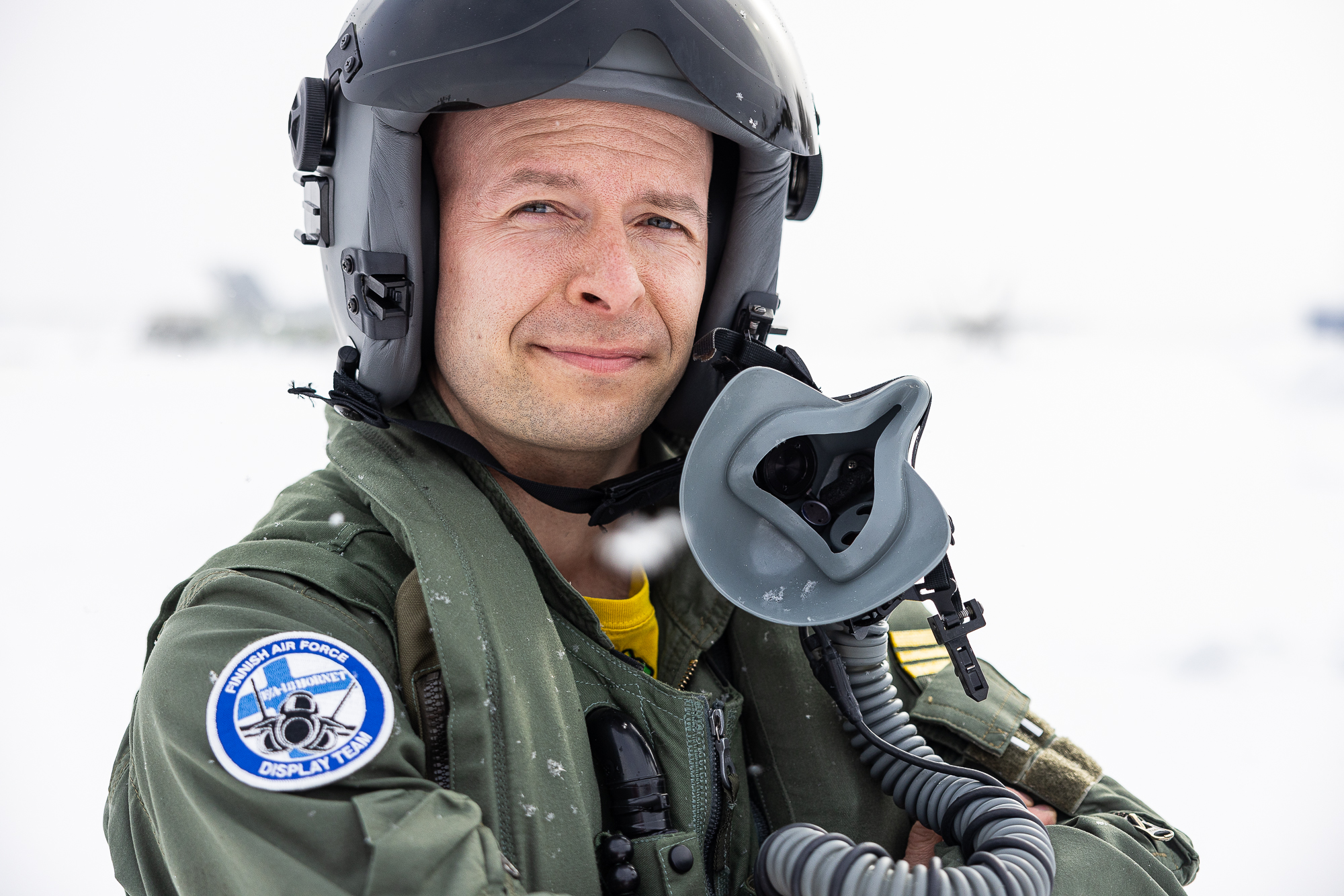
Captain Henri Toppari is serving at Fighter Squadron 11 as a flight and air combat instructor at Lapland Air Command. Having served 11 years at the Air Command, this man who obeys call sign KIF has more than one thousand flight hours under his belt. This year, Toppari pilots the Hornet, in addition to his regular work duties, also in the role of the Air Force’s main display pilot.
- Even if drivers from the more experienced crew are always selected as Hornet display pilots, I have to admit that I was surprised to get chosen for the job. I thought that for me, the ship had already sailed, but being selected was a great honour, Toppari says.
This year, Captain Petteri Kairinen from Karelia Air Command serves as stand-in display pilot.
HENRI TOPPARI
- Air Force’s main display pilot 2023
- From Kauhava
- Military rank: captain
- Serves at Fighter Squadron 11, Lapland Air Command
- Has been piloting the Hornet for 11 years, ca. 1050 flight hours
- Call sign KIF
- Hobbies: ice hockey, golf and reading
Henri, what has your journey to become a fighter pilot been like?
The journey, and the long first lap of it, have taught me to enjoy what I am doing and appreciate each working day.
I come from Kauhava, where we lived next door to the former Training Air Wing. As a little boy, in the yard of our house and from the windows of our school, I got to watch aircraft flying; that’s where I got the spark for a fighter pilot’s career.
I focused on performing well at school and to begin with, many of my hobbies were sports. At the application stage, in fact, it didn’t take me long to realize that as far as physical fitness and academic performance were concerned, I was well suited for a pilot’s career. The application process and tests were versatile, and fortunately, test after test, I received an invitation to the next phase.
However, it turned out that I did not get in at the first try. After having dreamed about it for so long, it was a huge disappointment. I ended up doing my military service at the Training Air Wing and served as a military police sergeant in the end. In the evening before mustering out, I interrupted my service and reapplied to the Pilot Reserve Officer Course in Tikkakoski. And this time I made it!
My military service turned out to be a bit longer, two and a half years from the beginning to the end, but it was worth it. The journey, and the long first lap of it, have taught me to enjoy what I am doing and appreciate each working day.
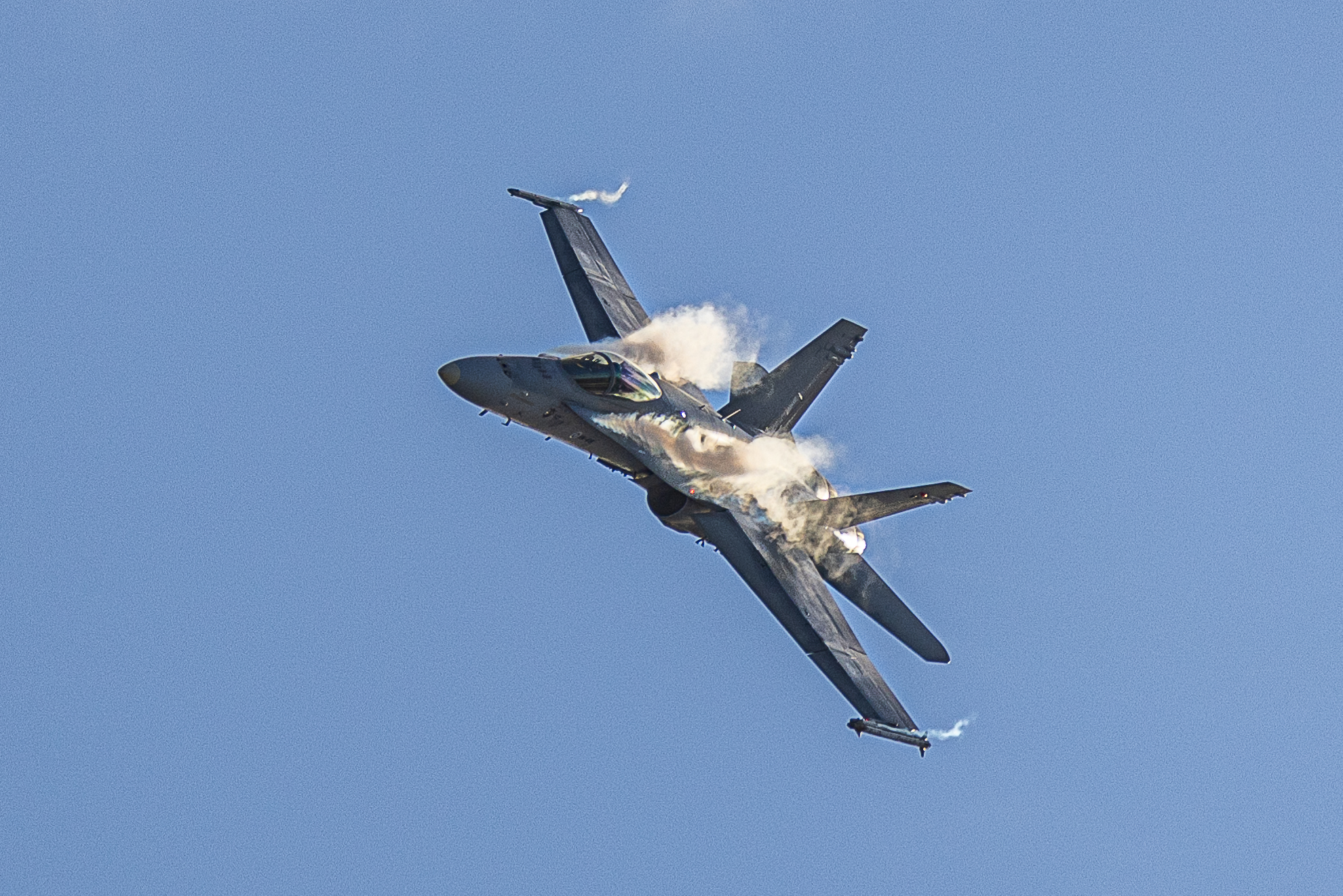
For you, was transferring from Kauhava to Rovaniemi and from the controls of Hawk to Hornet a big cultural shock?
No, it wasn’t. I came up here in 2012 with my wife and an open mind, and right from the beginning, we had no problem whatsoever getting settled. Hornet training went smoothly; flying the Hornet has been the most awesome thing in the whole package.
What kind of a workplace is Lapland Air Command, and the Air Force?
I was not only accepted, but actually welcomed as one of the team from the very beginning.
The best thing about Lapland Air Command and Fighter Squadron 11 is the team spirit. I was not only accepted, but actually welcomed as one of the team from the very beginning. I greatly enjoy working for the Air Force and I’m highly motivated to do this job.
What do your daily duties include?
I’m a flight leader and a flight and air combat instructor. The job also includes supervisor duties as Chief of the Weapon Tactics Section. In the morning, a regular working day starts with distributing tasks for the whole squadron. It covers an overview of the flight operations plans for the day, walking the student through the sortie, getting well warmed up and putting your gear on. Before stepping to the aircraft, the flight team assembles to check the aircraft’s equipment, weather conditions and any other matters possibly affecting the sortie.
A sortie takes from one half hour to an hour and a half, depending on the task. In the instructor role, in addition to flying, I observe the student performing. After each sortie, we discuss how the student performed the sortie.

Last year, you were in the stand-in display pilot role, and this time, you get to perform your own display routine. Your thoughts on this?
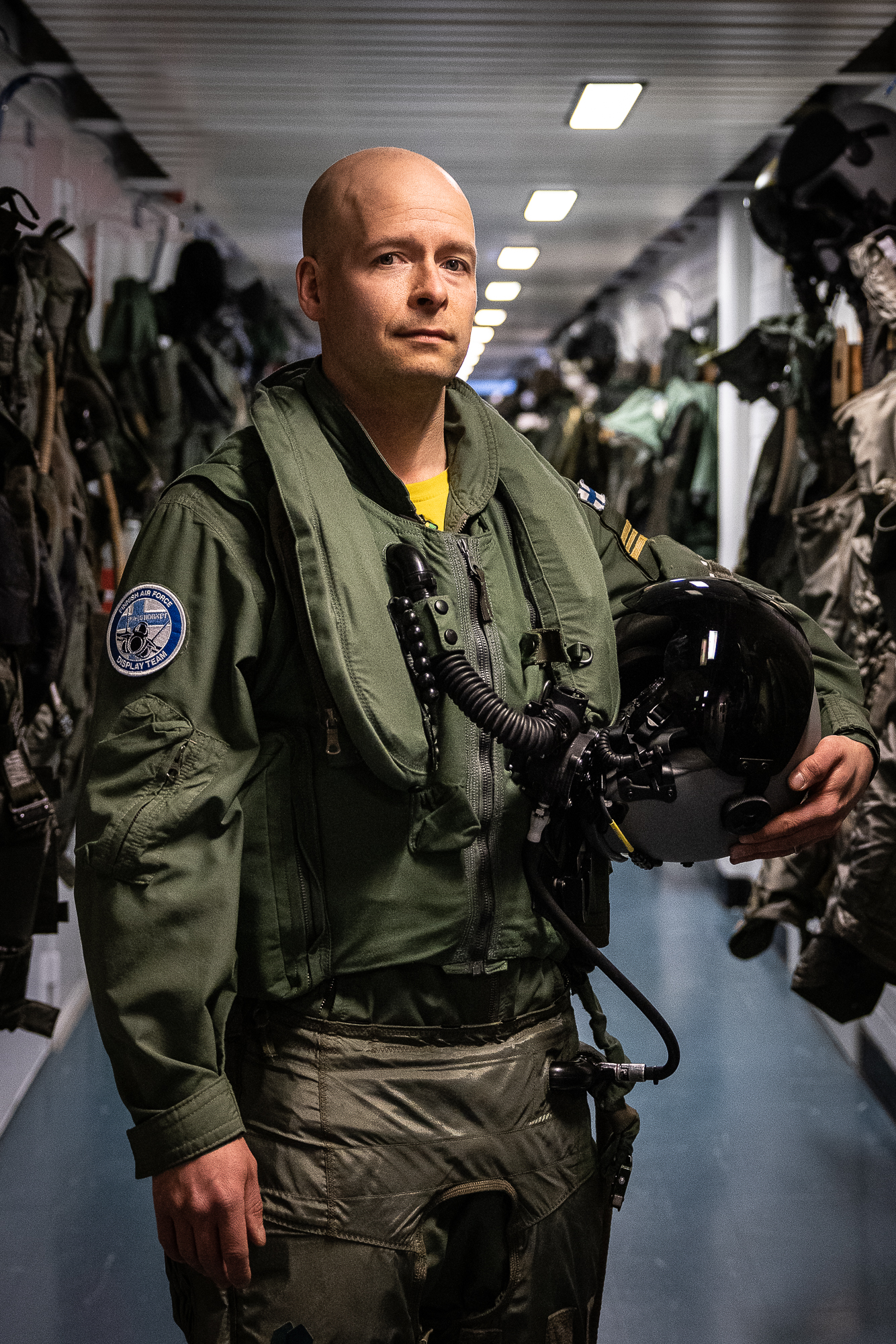
All of last year, as I was serving as Aleksi Ritvos’ stand-in display pilot, I kept thinking about the manoeuvres that I have enjoyed watching and wanted to perform later myself. That is how the planning started, and it has taken lots of graph paper and simulator flight hours.
What kind of Hornet solo are we going to see this year?
I’ll try to showcase manoeuvres that can be done with the Hornet, but not with many other aircraft. The routine includes high angle of attack manoeuvres in which the aircraft may not be moving in the direction to which its nose is pointing. The sequence includes two tricks that are my absolute favourites: the foot barrel roll and hat, perhaps better known as the cobra by some of us. I know they really look good to the spectators.
The spectators can see the Hornet all the time during the show, and there is something taking place all the time. Let’s mention that all the manoeuvres are included in the training programme of Hornet pilots.
What is the Hornet like as a display aircraft?
I don’t think any other fighter jet is as “cool” as the Hornet.
Performing display flights with the Hornet is cool exactly because it can fly high angle of attack manoeuvres still able to be controlled at all times. It looks and feels fierce and aggressive.
Of course, I look at display routines through coloured glasses, but the Hornet is always truly impressive in display flights. You can fly no other fighter jet the way you fly the Hornet. Sure enough, it depends on what the spectator appreciates the most, but if you ask me, no other fighter jet is as cool as the Hornet.
It will also be interesting to see what kind of routine the Swiss Air Force Hornet will perform in the Finnish Aeronautical Association’s Turku Airshow on 17-18 June.
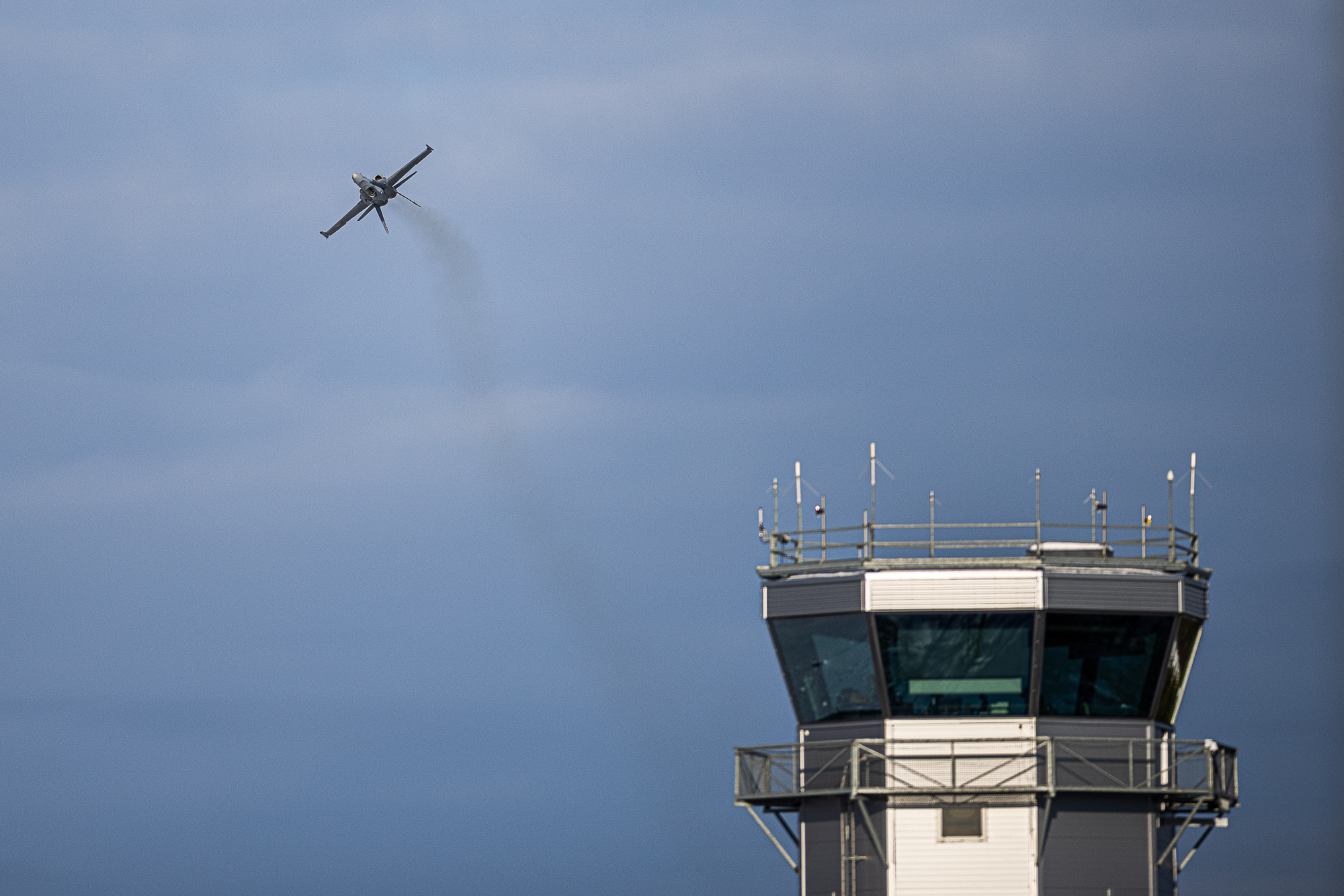
How do you get prepared for individual displays?
When the H hour approaches, I mentally run through the sequence alone where no-one can see me, with my eyes closed, doing the aerobatics with my arms.
I carefully follow weather forecasts to know which one of the three routines created for different weather conditions I will perform. When the H hour approaches, I mentally run through the sequence alone where no-one can see me, with my eyes closed, doing the aerobatics with my arms. If the performance site is new to me, I also go check the arrangements and special features.
Closer to the display flight, I do a thorough warm-up. I have a gym routine of my own for warming up especially the large muscles, neck, throat and the rest of the spine.
Then, you put your gear on, check the aircraft, start the engine and start taxiing. All these are seamless routines. At the start of the runway, I take a moment to focus, tell myself to go kill it, and start the engine.
I don’t have any superstitious routines; I have quite enough of them in ice hockey. I guess it’s typical of me to do all the routines by myself without any distraction, calmly concentrating myself.
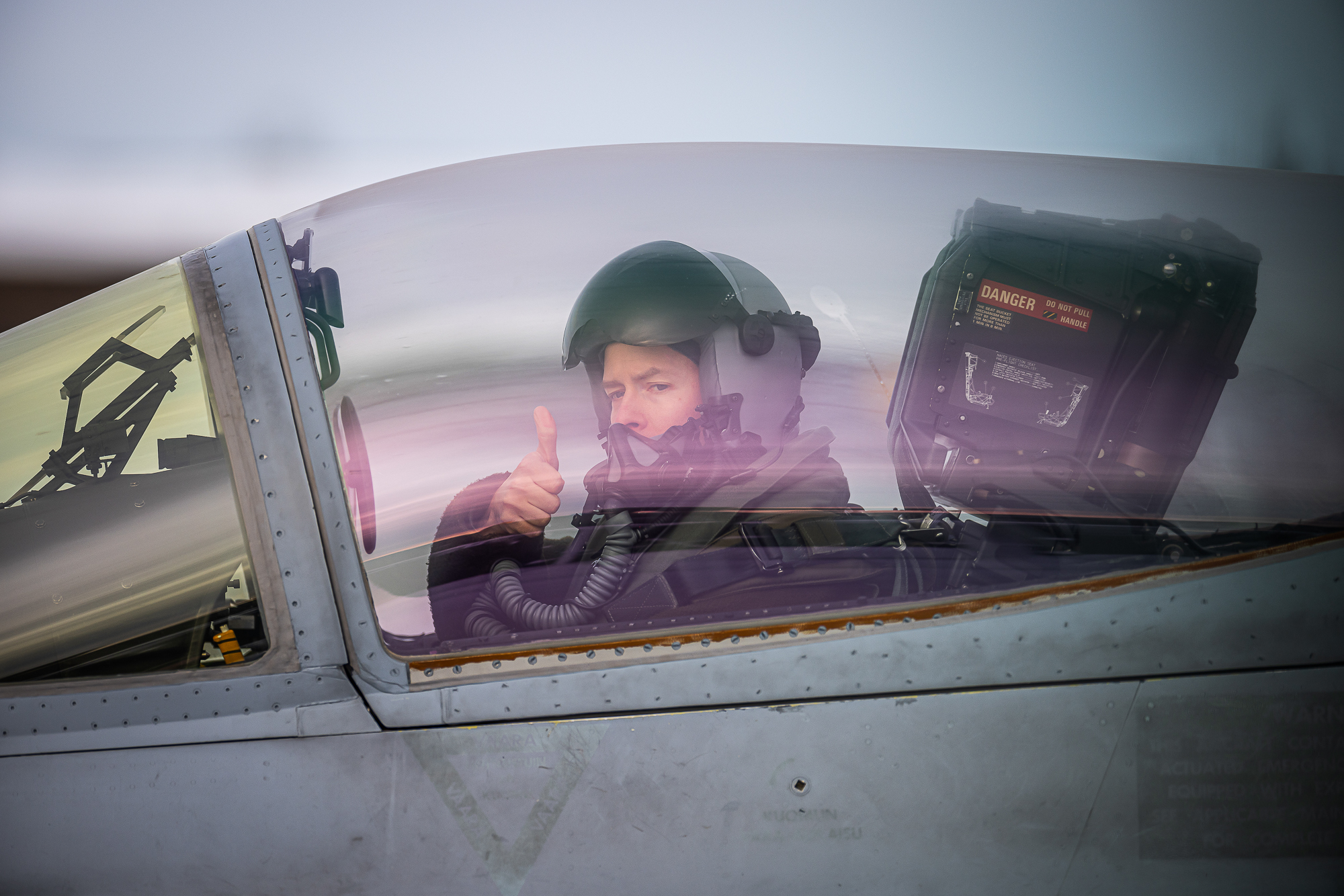
What would a perfect display flight weather be like?
Windless sub-zero weather is ideal for flying, but for performing a display flight, I would say a weather in which the spectators don’t get cold, don’t get wet and enjoy themselves would be perfect.
And what is your most favourite location for performing a display flight?
My most favourite location would be where members of my own family would be in the audience - you would get to show for once what exactly Daddy does for a living. Sure enough, even if there wasn’t anyone to watch you perform, at any rate, flying is still so much fun. And if somebody else also enjoys my flying, it is awesome for sure.
What are your expectations for the upcoming flight display season?
I wish for successful events where everybody would enjoy themselves.
I wish for successful events where everybody would enjoy themselves. I hope I will be able to pitch in to motivate young people to take this path. As far as big international air shows are concerned, my programme includes at least the RIAT in the UK in mid-July and Radom in Poland at the end of August. I’m looking forward to them.
Follow the Air Force on social media
Facebook @ilmavoimat
Twitter @FinnishAirForce
Instagram @ilmavoimat
Follow Lapland Air Command on social media
Facebook @lapinlennosto
Twitter @Laplsto



